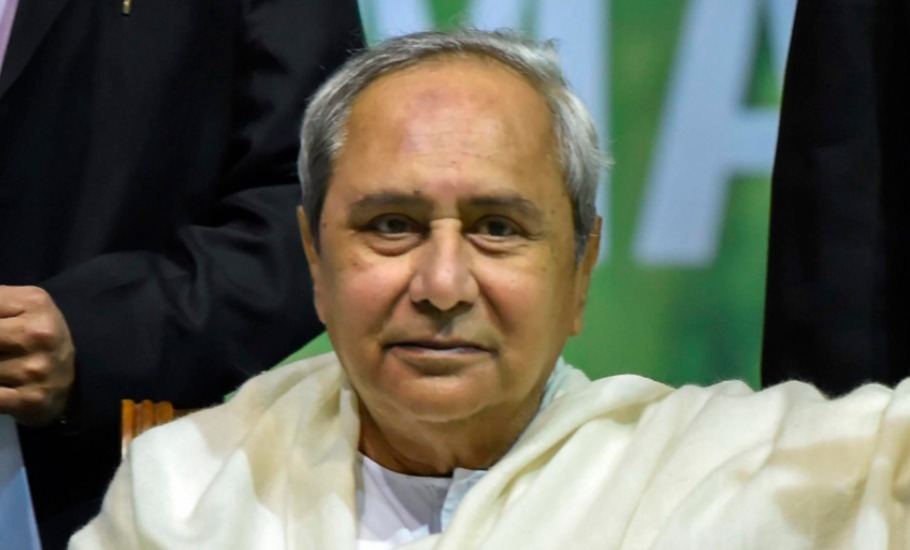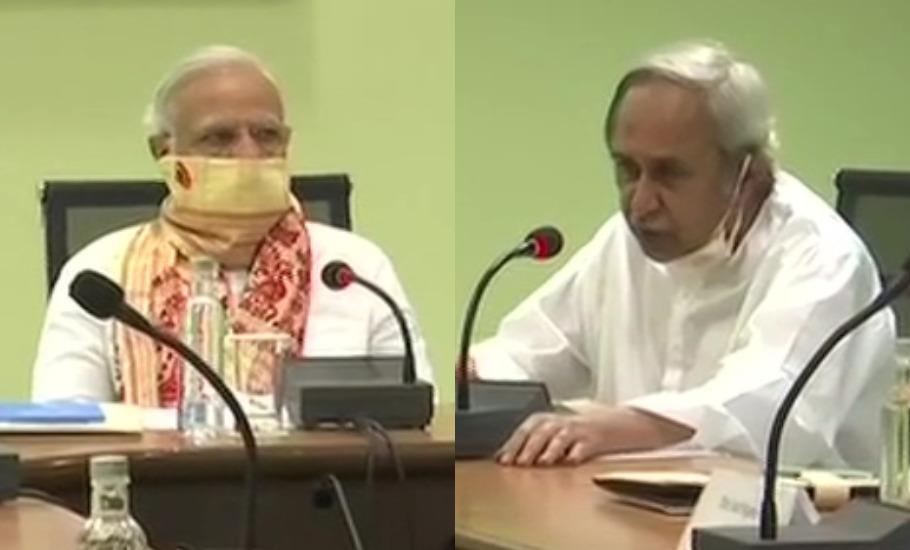
Cyclone landfalls help Naveen Patnaik win 'landslides' in Odisha
It’s widely viewed that despite the NDA government’s all possible support and active cyclone assistance to Odisha, on the face of Naveen’s popularity, the BJP's hopes of capturing power in the state looks like a distant dream, at least for a few more years.

Memories of the horrors of 1999 super cyclone continue to send shivers down the spines of several millions who had watched and experienced the wrath of nature in at least 12 coastal districts of Odisha (then Orissa). The cyclone, the deadliest tropical disaster of the twentieth century, had killed 9,887 people (though unofficial sources say the number was much higher) and shattered countless dreams.
From the 1999 super cyclone to last week’s Amphan, Odisha has experienced a number of tropical disasters – Phailin (2013), Hudhud (2014), Titli (2018) and Fani (2019), though some of them partially. These cyclones had not only impacted the lives and livelihoods of people, but also influenced the politics of this eastern state along the Bay of Bengal.
Odisha Chief Minister Naveen Patnaik’s Biju Janata Dal (BJD) has won all five successive elections since 2000 with a thumping majority even as the Congress, the biggest political casualty of nature’s fury, is struggling to find a footing since then.
On the other hand, the Bharatiya Janata Party (BJP) continues to nurture hopes of capturing power in the state. However, it’s widely viewed that despite the Prime Minister Narendra Modi-led National Democratic Alliance (NDA) government’s all possible support and active cyclone assistance to Odisha, on the face of Patnaik’s popularity, it looks like a distant dream, at least for a few more years.
After an aerial survey of the areas ravaged by cyclone Amphan, on May 22, PM Modi had announced ₹500 crore advance assistance for Odisha to carry out immediate relief and restoration works in the affected districts; the ministry of home affairs (MHA) released the amount in less than 24 hours. The central government had generously provided all assistance to Odisha after cyclone Fani (May 3, 2019) as well.
In 1999, the then Congress government — till then Congress was the most dominant political party in Odisha — had simply failed to rise to the occasion.
“When millions were in terrible distress, many thousands lived without food and lakhs had to sleep literally under an open sky, and remember it was early winter, Congress leaders were busy playing musical chairs for the chief minister’s post. It was administrative apathy at its worst,” recalled senior journalist Bighneswar Sahu.
Ironically, when the Centre had released ₹500 crore as relief, instead of spending it to bring succour to the millions affected, the first thing that the state government reportedly did was to use ₹100 crore to pay salaries to its staff.
According to former editor of an Odia daily, Rabi Das, the administration in Odisha had completely collapsed. “Though some Congress governed states – Karnataka, Delhi, Madhya Pradesh and particularly Maharashtra – had pitched in with their support at the behest of party president Sonia Gandhi, the damage had already been done,” opined Das.
As Odisha went to polls a few months later in 2000, people voted for the then politically un-tested Naveen Patnaik who led the BJD in alliance with the BJP to form government.
“Prime Minister Vajpayee had stood by the state and extended full support while the then chief minister of neighbouring Andhra Pradesh, Chandrababu Naidu, sent his men with materials, and did a wonderful job in the affected areas during the state’s most critical days,” recounted Das. The BJD-BJP honeymoon ended after two terms in 2009 as Patnaik decided to go alone.

Often described as the biggest beneficiary of cyclone, Patnaik focused, among other things, on building a mechanism to meet the future challenges. Odisha state disaster management authority (OSDMA), the first institution of its kind in the country, was set up. Then came a specialised unit – the Odisha disaster rapid action force (ODRAF) in 2001, five years before the NDRF. These are only two of the many initiatives undertaken by Odisha to handle such calamities.
According to a former bureaucrat of that time, there were many “uphill tasks”. The scale of destruction required massive reconstruction and it was essential to ensure the job quality. Also proper utilisation of the huge funds, which kept pouring in from different sources, and smooth coordination among different departments as well as civil society, was extremely important.
“The OSDMA was created to move in a systematic and coordinated manner, ensure quality of work and take preparedness of the state to a higher level to meet any such disaster in the future,” said the ex-IAS officer. “He (Patnaik) displayed political will and once convinced, always backed the initiative,” recalled another retired IAS officer, Aurobindo Behera, who headed the OSDMA in its initial days.
Today, Odisha is considered a pioneer in disaster (cyclone) management. “Odisha is a role model in the country. It can tackle any natural disaster,” said a senior NDRF officer.
Incidentally, though the intensity and magnitude of destruction caused by the last five cyclones were much lesser than that of the super cyclone, massive evacuations – 5.5 lakh (Phailin) and 10.4 lakh (Fani) – of people from ‘likely to be affected areas’ to safe cyclone shelters have saved precious lives.
No deaths due to cyclone Amphan: Odisha govt claims ahead of PM’s visit
The number of evacuees stood at 1.6 lakh before cyclone Amphan, however, special relief commissioner PK Jena had said, if required, the government was prepared to evacuate 11 lakh. That too in the midst of the COVID-19 pandemic and the enforced social distancing guidelines. All the evacuees were served cooked food at the cyclone shelters and Patnaik reportedly closely monitored the entire operation.
Not just preparedness, efficient cyclone management and lesser casualty figures during such disasters helped create an image of Patnaik as a pro-poor, pro-people ruler, and at the same time a tough and capable administrator. And this, to a large extent, paid rich electoral dividends every election, making him the longest serving chief minister of Odisha.
Opponents, though, disagree.
According to senior Congress leader Panchanan Kanungo, the two biggest requirements for immediate disaster response — telecom and road networks — have improved everywhere in India by leaps and bounds in the last two decades under the two successive central governments – UPA and NDA. Technology has advanced, and the IMD’s cyclone predictions have been spot on. “These were absent before the 1999 cyclone,” Kanungo said.
Citing the post-Fani situation, Kanungo said, “Even major parts of the capital city, Bhubaneswar, remained in darkness for 12 days. Even now, the electricity department is not prepared to withstand even a low intensity cyclone of 100 kmph,” added Kanungo, who was the finance minister during Patnaik’s first term as chief minister.
As cyclone Amphan makes landfall, heavy rain lashes coastal Odisha
On the other hand, senior BJP leader and Bargarh MP, Suresh Pujari claimed the ruling dispensation is only interested in publicity stunts. “Natural calamities are a bone of contention for some political parties,” Pujari said, adding, “Instead of addressing (emergencies) properly, political parties use it for their own mileage. It’s unfortunate.”
“There is nothing wrong in that as long as it doesn’t isolate any group,” countered Tathagata Satpathy, the editor of leading Odia daily Dharitri and its English-language sister publication Orissa Post.
“Creation of vote banks is not a criminal activity when a larger part of the population of any democracy feels favoured by a political decision which may or may not translate into economic benefits, and acts as a success story for a leader or a party,” added Satpathy, a former four-time BJD MP.
(The writer is an Odisha-based journalist)

